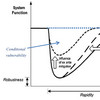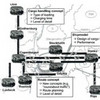 …how does the transportation network recover? And why are transportation networks so essential to disaster recovery? Ho do effective transportation networks contribute to the recovery effort? Is recovery even possible without a functioning transportation network? This was the topic of a session I attended at TRB 2009 this week. Although this session was mainly aimed at US transportation agencies, the introduction to the panel discussion had some key points I would like to reiterate here.
…how does the transportation network recover? And why are transportation networks so essential to disaster recovery? Ho do effective transportation networks contribute to the recovery effort? Is recovery even possible without a functioning transportation network? This was the topic of a session I attended at TRB 2009 this week. Although this session was mainly aimed at US transportation agencies, the introduction to the panel discussion had some key points I would like to reiterate here.
All hazard and multi-modal
The most important point is that recovery plans need to be broad, they must include all possible hazard events and all transportation modes. The unthinkable must be made thinkable.
Overall community recovery
Transportation recovery plans need to look beyond their mere purpose of addressing hazards in the transportation network. The transportation network is essential to many communities. This implies that the restoration of the transportation network also means the restoration of the economy and the society, not just the infrastructure.
Different needs
With the overall community recovery perspective in mind, remember that different communities have different needs. Urban communities have different essential needs than rural communities.
Corridors or individual links?
A recovery plan must balance the local, regional and national importance of the transportation network. It may be more important to restore freight corridors than individual road links.
Making things better?
Finally, after an incident, when the need to restore has arrived, ask yourself: If I was going to build this road or rail line today, would I build it the way it is, or can I change it to the better? Despite the possible catastrophic circumstances, transportation recovery is not about haphazardly putting together something that works, it can also be a great opportunity for improvement. Remember, the transportation network is an important contributor to a region’s economic resilience vis-a-vis disaters.
Are roads more important than computers?
While computers are crucial to many businesses and ever so part of their critical infrastructure, what about roads? Which is more important – or ‘critical’ – road networks or computers? I think roads are more important. Because, without trucks, nothing goes anywhere.
Related
- husdal.com: Measuring economic resilience
- husdal.com: Are roads more important than computers?
- husdal.com: Life without trucks












